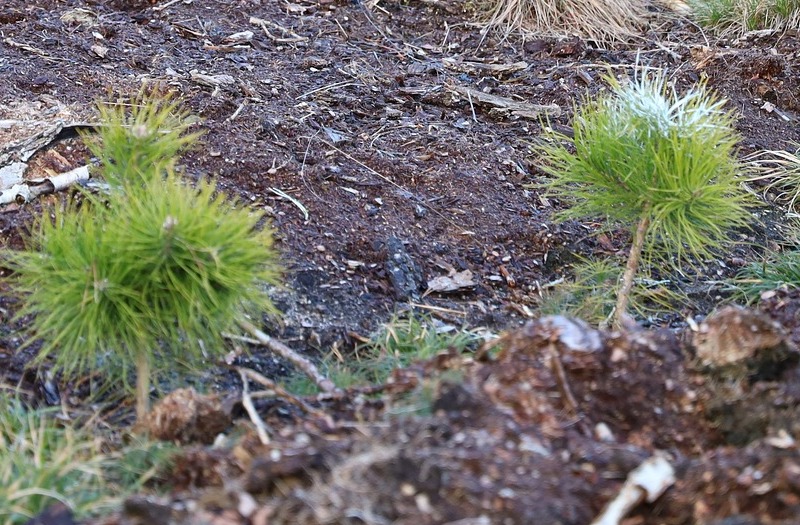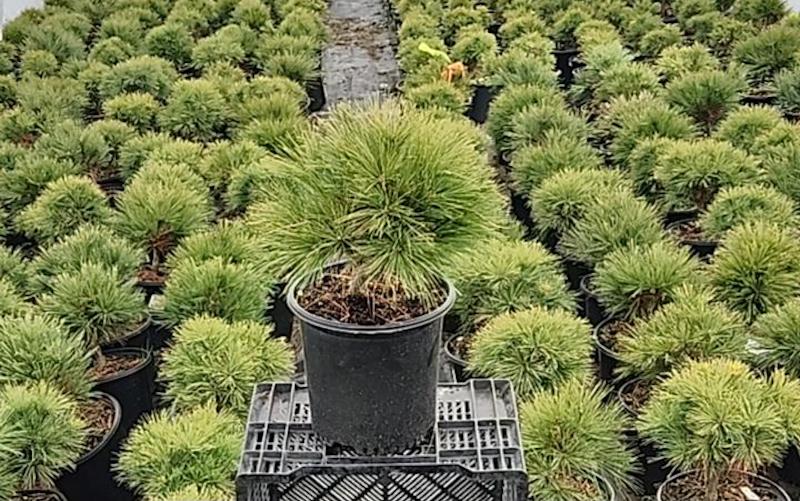Pine trees, Pinus sp., are common evergreen plants that can serve many roles in the landscape. Providing year-long interest, pine trees make wonderful shade trees, windbreaks, accent plants, wildlife habitat, and privacy screens. This article will cover the correct way to plant pine trees so that you can add these popular trees to your own garden.

What You Need To Plant Pine Trees
- Garden spade or shovel
- Hose and water source
- Mulch
- Pruners or knife
Where to Plant Pine Trees
Pine trees grow best in well-drained, slightly acidic to neutral soils. Plant pine trees in full sun to grow full, healthy plants. Unless you are growing dwarf cultivars or smaller pine species, plant pine trees away from your house, powerlines, driveways, and other buildings. Pine trees are fast-growing plants, often growing very tall with extensive root systems. Pine trees growing near these areas can damage cement and foundations, while posing an elevated risk of fire or damage from falling branches. As evergreens, pine trees are excellent trees to use in a windbreak or as a privacy screen. Windbreaks are densely planted strands of trees that provide a barrier from harsh winds. To utilize pine trees as a windbreak, orient them perpendicular to the direction of the prevailing wind.
Pine Tree Spacing
Pine tree spacing is largely determined by the size of the tree. Some species of pine trees can grow over 100 feet tall, while others may only grow or spread to 6 feet. Keep the mature height and spread of the tree in mind when planting, as most are planted while young and small. Planting pine trees too close together will lead to competition for light, nutrients, and water. Proper spacing is also important for air circulation, which helps mitigate the spread of pests and diseases. For larger pine trees, a spacing of about 10-20 feet is suitable. Smaller pine trees can be spaced about 5-15 feet apart. Slightly reduce spacing when using pine trees for windbreak. Spacing will also affect the growth habit of pine trees. When grown close together, many species of pine trees will have growth concentrated at the top of the tree, leaving long, bare trunks at the bottom. More spacing between trees will lead to consistent branching from the bottom to the top of the tree.

Steps To Plant Pine Trees
Before you plant your pine tree, identify the type of nursery stock you have. Is your tree container grown, bare root, balled and burlapped, or are you simply just transplanting a tree from the ground? In some ways, the type of stock you have will affect how you plant it.
As the name implies, container-grown pine trees are grown and sold in nursery pots with soil. To plant container-grown pine trees, remove them from the pot and gently loosen the roots. Plant them at a depth that is roughly equivalent to the height of the pot they were grown in. Container-grown pine trees can stay in their containers for a few weeks, giving you a longer planting window.
Bare root pine trees are an economical choice for larger planting projects, such as wind or privacy screens. These plants are sold as their whole root systems without any soil. Besides affordability, the advantages of a bare root purchase are that the roots are not pot bound and establish more quickly because they don’t need to adapt to new soil conditions. Keep bare roots cool and moist until planting. Set the bare roots into the ground so that their root collar – where the trunk meets the roots – is level to the soil. Spread out the roots so that they are horizontal, and cover with soil.
Balled and burlapped pine trees have root systems contained within a ball of soil that is wrapped in materials such as burlap, fabric, twine, and wire. To plant this kind of stock, remove the fabric and wire coverings from the roots and plant in a hole that is about twice as wide as the root ball. Balled and burlapped pine trees are most susceptible to transplant shock, as their roots are heavily pruned before being wrapped.
Step 1 - Dig a hole that is about twice as wide as the root ball and deep enough for the root collar to be even with the soil line. Planting too deep will cause rot.
Step 2 - Using pruners or a pruning knife, remove any lateral roots or roots that appear damaged, in addition to any wire or mesh restraints on the root system.
Step 3 - Place the pine tree into the hole, then fill with soil. Do not pile soil up against the bark of the tree to prevent rot and damage to the plant’s vascular system.
Step 4 - Using a hose, water the pine tree deeply around the area of the root ball. This helps to get the roots established and minimizes the effects of transplant shock. Water newly planted pine trees every 1-3 days for the next few weeks, gradually reducing watering to about once per week as the plants become established.
Step 5 - Evenly spread a few inches of wood-based mulch around the root zone, avoiding contact with the trunk.
Step 6 - If desired, apply protective coverings around the newly planted pine trees, such as tubing or hardware cloth.
Step 7 - Refrain from fertilizing your pine tree until at least the following spring after planting.
When to Plant Pine Trees
Pine trees are usually planted when they are partially dormant or just before the new growing season. The best times of the year to plant pine trees are late winter, spring, and fall. This will allow the trees to develop their root systems while minimizing stress to the tree. For similar reasons, the best time of the day to plant pine trees is in the morning. This reduces transplant shock and allows sufficient time for acclimatization. Do not attempt to plant pine trees when the ground is frozen or during periods of extreme heat and drought. Doing so will interfere with the tree’s ability to take up water.
Transplanting Pine Trees
Transplanting is a good option for younger, smaller pine trees, such as seedlings and saplings, as their root systems are not as extensive as more mature trees. Transplant young trees in early fall or late winter to early spring when the trees are mostly dormant. This gives the plants adequate time to adjust to their new location. When transplanting pine trees, use the planting steps listed above.
 |
Lauren Youngcourt - Published 04-07-2023 |
